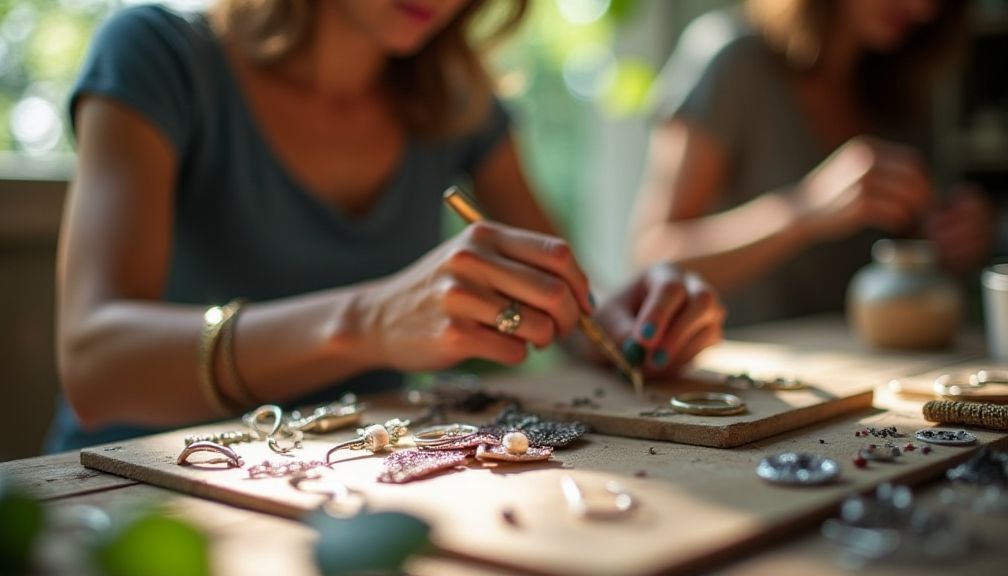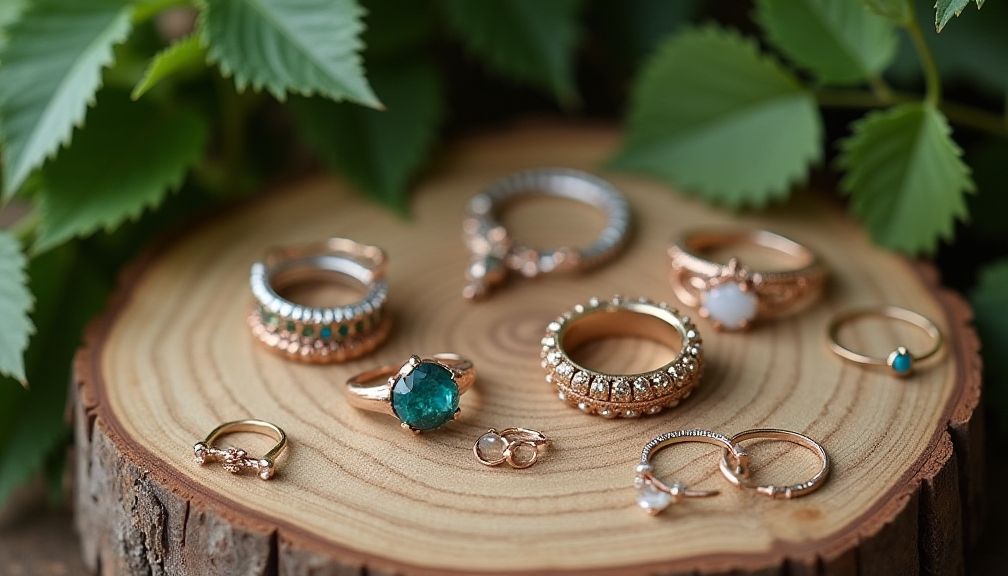In recent years, the conversation surrounding sustainability has taken center stage across various industries, and jewelry is no exception. Sustainable jewelry reflects a growing commitment to responsible practices that prioritize environmental health, social equality, and ethical sourcing. But how is this type of jewelry really made? This post aims to uncover the journey of sustainable jewelry, from the raw materials to the final product.
The Need for Sustainable Jewelry
The jewelry industry has long been criticized for its environmental degradation and ethical violations. Traditional mining practices can lead to significant deforestation, soil erosion, and water pollution. Moreover, human rights abuses have been reported in artisanal mining scenarios and large-scale operations alike. As consumers become more conscious of their purchasing power, the demand for sustainable alternatives has skyrocketed.
The rise of sustainable jewelry is not just a trend; it’s a need driven by a well-informed public. Consumers are now seeking pieces that reflect their values while also offering unique stories and aesthetics. But what sets sustainable jewelry apart from conventional pieces?

Key Components of Sustainable Jewelry
Understanding how sustainable jewelry is made requires a breakdown of its key components. These elements range from the sourcing of materials to the manufacturing processes and labor practices involved.
Ethical Sourcing of Materials
The sourcing of materials is perhaps the most significant part of creating sustainable jewelry. Many brands now prioritize responsibly sourced materials that consider both the environment and the people involved in the supply chain. Precious metals and gemstones can be sourced in a variety of ways, including:
- Recycled Materials: Many sustainable jewelers use recycled gold and silver. This practice reduces the demand for mining new materials, which often involves harmful environmental practices.
- Fair Trade Gems and Metals: Brands may choose to source stones and metals that are certified as Fair Trade or Fairmined. These certifications ensure that the extraction processes support fair labor conditions and environmental sustainability.
- Lab-Created Diamonds: Lab-grown diamonds are chemically identical to natural diamonds but without the environmental impact of mining. They are eco-friendly and often more affordable.
Eco-Friendly Manufacturing Practices
Once materials are sourced ethically, the next step is the manufacturing process. Sustainable jewelry brands aim to minimize waste and energy consumption during production. Here are some practices that have been adopted:
- Use of Sustainable Energy: Many jewelry manufacturers are now utilizing renewable energy sources, such as solar or wind, to power their production facilities, reducing reliance on fossil fuels.
- Waste Reduction: Innovations in technology have enabled jewelers to minimize waste. Techniques like CAD (Computer-Aided Design) allow artists to design pieces digitally, which reduces the need for excess materials.
- Local Production: By producing jewelry locally, brands can reduce their carbon footprint associated with shipping and transportation, as well as support local economies.
Fair Labor Practices
Ethical labor practices are central to the sustainable jewelry movement. Consumers want to ensure that the products they purchase are made by artisans and workers who are treated fairly. Sustainable brands often adhere to the following principles:
- Transparency: Many brands vet their suppliers and are transparent about their labor practices, allowing consumers to understand the origin of their jewelry.
- Fair Wages: Sustainable jewelry brands strive to provide fair wages to their artisans and workers, ensuring that they receive compensation that reflects their skills and labor.
- Safe Working Conditions: Ensuring safe and healthy working environments is crucial. Sustainable brands emphasize regulations and oversight to protect their workers.
The Design Process
Design is an essential aspect of jewelry making. Sustainable jewelry designers are finding new and innovative ways to create captivating pieces while emphasizing their commitment to sustainability. Here’s how:
Inspiration from Nature and Culture
Many designers draw inspiration from nature, utilizing organic shapes and colors that reflect the environment. Others might turn to cultural symbols that celebrate heritage while promoting the importance of sustainable practices.
Further Reading:
Unique, Limited-Edition Pieces
Sustainable jewelry brands often create unique or limited-edition pieces, which not only reduce waste but also encourage consumers to value their items more. Each piece is often imbued with a story, connecting the wearer to its origins.
Custom Design Services
Another trend is offering custom jewelry design services. Consumers can collaborate with jewelers to design a piece specifically for them, using responsibly sourced materials. This personal touch fosters a deeper appreciation and connection between the buyer and the handcrafted item.
Packaging and Shipping
The commitment to sustainability extends beyond the product itself; it also includes eco-friendly packaging and shipping practices. Sustainable jewelry brands typically employ:
- Biodegradable Packaging: Using materials that break down naturally reduces long-term waste. Recyclable or compostable packaging is becoming a gold standard.
- Minimalist Packaging: Brands are shifting towards minimalist designs to cut down on excess material and focus on the product itself.
- Carbon-Neutral Shipping: Some brands partner with shipping companies that offset their carbon emissions, ensuring that the delivery process is also eco-friendly.
Consumer Education and Engagement
For sustainable jewelry to flourish, consumer education is vital. Many brands actively engage with their customers by providing information on:
- Product Origins: Sharing stories behind the materials and the artisans helps build a connection between consumers and the jewelry.
- Sustainability Practices: Offering insights into their sustainability practices helps consumers make informed choices.
- Care Instructions: Educating consumers on how to care for their jewelry ensures longevity, encouraging a mindset of value rather than disposability.

The Future of Sustainable Jewelry
As the demand for sustainable jewelry continues to rise, the industry is likely to see further innovations. Technological advancements, coupled with an increasing focus on ethical practices, will likely lead to exciting developments. This includes:
- Blockchain Technology: Implementing blockchain can offer transparency in the supply chain, allowing consumers to trace their jewelry back to its origin easily.
- 3D Printing: 3D printing technology can revolutionize the design process, enabling more complex designs while minimizing material waste.
- Collaborations with Local Artisans: Partnering with local jewelry makers and artists can bring unique cultural perspectives into the sustainable jewelry space.
Conclusion
Sustainable jewelry is not just about aesthetics; it’s a reflection of values, ethics, and environmental stewardship. As we have explored, the journey of creating sustainable jewelry involves ethical sourcing, eco-friendly manufacturing, fair labor practices, and a commitment to consumer education. This holistic approach results in beautiful, meaningful pieces that resonate with conscious consumers. By choosing sustainable jewelry, you aren’t just purchasing an accessory; you’re making a statement about the world you want to live in. Join the movement toward sustainable fashion and adorn yourself with jewelry that tells a story — a story of care for the planet and its people.








